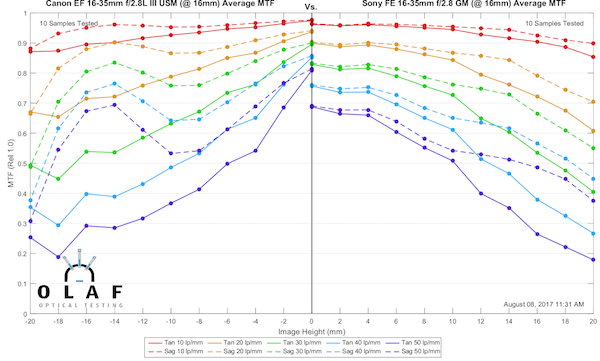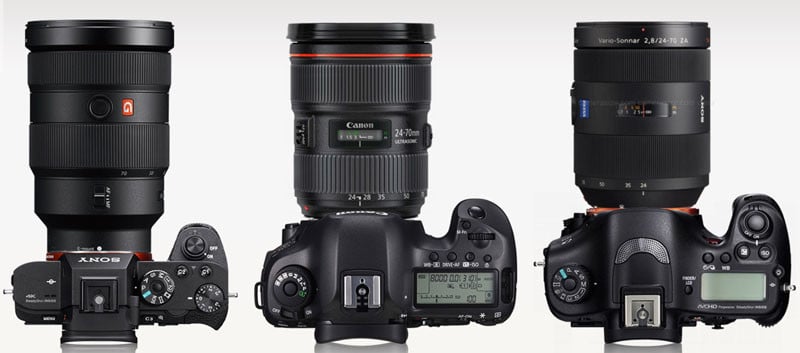dtolios
Offline
Upload & Sell: Off
|
 Re: Article posted on Dpreview re: Canons lack of innovation Re: Article posted on Dpreview re: Canons lack of innovation | |
Snopchenko wrote:
Uh, what an inflammatory thread... I'll just stick to one thing here:
dtolios wrote:
What I still cannot grasp is the fixation with a different mount should Canon opt for a FF MILC...
"oh Canon, I know it would hurt your EF lenses to go MILC" ... no FFS, NO. Either use a pass-through adapter ala EF-M->EF, or SIMPLY DON'T GO THIN BODY...
WHY ? WHAT IS THE BENEFIT?
To adapt old lenses? That is so petty ppl...if the body goes smaller, and you don't need an adapter, you will force the lenses to get bigger - pretty much "building-in" the length of the adapter or "mirror-box" that is removed. This distance between the lens and the sensor is not a redundant thing of the past.
Unless you are speaking of Samyang and other MF-only manufacturers that are offering the same designs in any available mount, this is not true. Most of Samyangs are really DSLR designs "padded" to compensate for the flange distance, but even that manufacturer started having dedicated mirrorless lenses designed with a smaller flange distance in mind. As do all the bona fide producers - but the physics of the required actual aperture opening size kicks in with the normal lenses and moreso with the telephotos, anyway. However, look at the Sony 12-24/4 - it's literally half the size of the comparable Canon and Sigma (DSLR) designs while being at least as good optically (none of the field curvature / distortion issues of the Sigma, nor the CA / edge sharpness falloff of the Canon at the widest setting). Most of the Sony E f/1.8 ~ f/2 primes (including the full frame ones) have 49mm filter threads which are smaller than the comparable DSLR lenses, even though they are mostly new (and intricate) designs inside.
The AF Samyangs for the FE mount are also the smaller - look at the size comparison, let's say, between the 14mm AF (mirrorless) and MF (actually DSLR) lenses: the mirrorless one is 85.5 x 97.5 mm, the (factory-)adapted MF DSLR one is 87 x 122.1 mm. The weight saving is not as noticeable - 505 grams vs 570 - but at least part of this is due to the AF motor, aperture actuator and other electronic parts in the AF lens (the dumb one has none of that). The figures are courtesy of B&H.
Ehm, ok...f/2 primes...& filter threads...how does that cater to what I was writing again? And MF Samyang?
What about native AF f/1.4 primes and f/2.8 zooms?
Sony FE 35mm f/1.4 ZA / 78.5 x 112.0 mm / 72mm filter / 630 gr
Sigma 35A f/1.4 / 77 x 94mm / 665 gr
Canon EF 35L f/1.4 II / 80.4 x 105.5 mm / 72mm filter / 730 gr
^The Sony is longer than the competition, it cannot catch up in IQ.
Yes, it is lighter, but it is in the expense of build quality vs. the 35mm II - to R Cicala's words: "The mechanical construction is beyond impressive. This lens is massively over-engineered compared to any other prime we’ve ever disassembled". Perhaps a reason for the weight difference is also that the 35mm II is "polycarbonate outside / lots of metal inside", while the FE 35 ZA is the opposite. Not a bad thing IMHO, eventually all of the lenses' construction will be composite materials, but does tell you something about how much companies think consurmers care for appearances vs.utility - the Sony lens could have been even lighter - if that was a priority, but perceived "Quality" is more important than actual quality. Which is ofc great with this one. If only IQ was up with the competition, or size was smaller, and it would cater towards the "MILCs do it better cause flange distance arguement"...it doesn't.
What about other got-to-be telecentric designs, like the UWA FE 16-35 GM?

What is that in the back? Wasted space?
Sony FE 16-35mm f/2.8 GM / 88.5 x 121.6 mm / 82mm filter thread / 680 g
Canon / 88.5 x 127.5 mm / 82mm filter thread / 790 g

At least, in this case, Sony did a superb job - apparently the above cannot be wasted space, and yes, they did save ~100gr. But no one can call that lens notably smaller "because MILC" or can show how this could not have been a SLR lens.
Keep going?
The Sony 24-70 GM is 87.6 x 136 mm, the Canon 24-70L II is 88.5 x 113 mm and 80gr lighter.

It just DOESN'T matter if you care for fast lenses, cause fast lenses are by definition large, and UWA/WA designs need some space between the elements and the sensor to keep the image projected as perpendicular as possible. Perhaps a dual curvature sensor in the far future would change that, but with flat sensors, that's what we get: what is saved from the shorter flange distance, is made up in the other side.
Please understand thats NOT a knock on MILC tech - I strongly believe that this is the future, and some could claim "Today".
My beef is with people advocating (crying) for a potential Canon MILC that should not use the EF mount natively.
I believe there would be no real benefit.
For marketing purposes, and to make it look a "new thing" they will perhaps do it, and even though the EF-M mount could probably accommodate a FF sensor, but being Canon they will make a mechanically different mount and combine it with a pass-through adapter for EF...just to make things needlessly complicated for photographers, but to satisfy the consumers that seem to beg for more excuses to buy more toys. And although I am not that different, I still stand in AWE of so many images that were produced with far worse equipment than mine by people that know their craft, and I have no illusions that a new camera will magically make me better - just like I would really like a sportscar without having the illusion that it will turn me into a pro driver.
|


